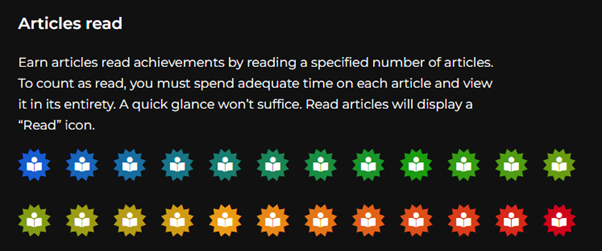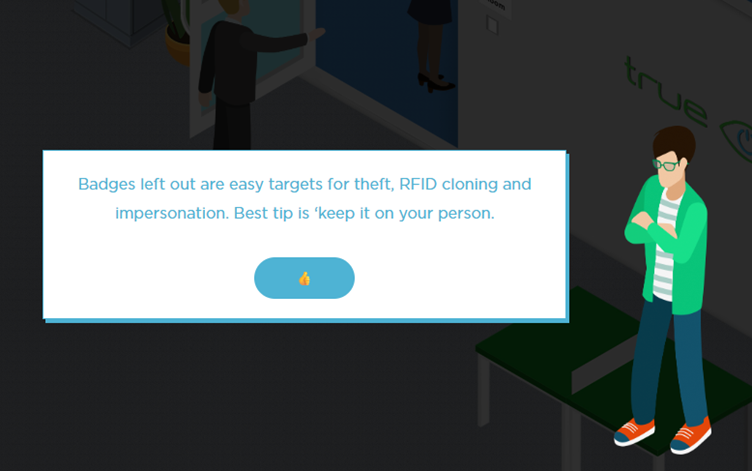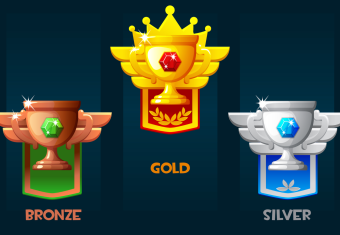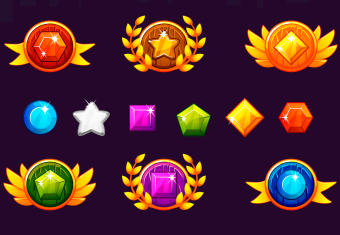When discussing how gaming elements are implemented into learning processes, gamification is commonly confused with game-based learning. It is easy at first to believe they are synonymous. However, although they have many aspects in common, they can describe very distinct methods of combining learning with gaming features. But what are the differences between them, and why does it matter?
What is Gamification?
Gamification in learning refers to the process of utilising game-like elements to motivate and engage students in order to improve their participation or performance. Both gamification and game-based learning are designed to alleviate the perceived effort or tedium that can be experienced during the learning process. They do this by applying the fun, playful aspects of gaming into learning structures. However, gamification specifically incorporates gaming features into a pre-established program. Gamification, therefore, is concerned with supplementing existing curricula through the creative use of extraneous gaming elements, rather than altering the learning content itself.
Case Study: Interserv and Digital Badges

At Interserv, we employ gamification features to promote quality engagement. For instance, we use digital badges, challenges, and achievements to encourage and reward participation on The Cove, the professional military education (PME) platform for the Australian Army. In the above example, badges are awarded on your profile for the number of educational articles you browse on the website. Badges are only provided to those who spend enough time reading through the articles. This, alongside other preventative measures, ensures that users are actively engaging with the content.
As the objective of these badges is engendering participation, all achievements and challenges are focused on generating consistent interaction with the platform. For example, reading, writing, and commenting on articles. Gamification should always be user-centric: for instance, gamification on The Cove also allows users to create their own goals based on their personal needs.
Since gamification is designed to supplement courses rather than completely overhauling the mode of teaching, it can be a fast, adaptable, and cost-effective technique to improve the learning experience. Although careful curation for the specifics of the course and its cohort is still required – such as understanding which form of digital badges would best motivate particular demographics of students – the core principles of gamification can be applied across courses. It is worth mentioning that although this flexibility is useful, it is far from the primary consideration: improving the learning experience through focused implementation. Gamification is not a cheap gimmick; it requires deliberate application.
What is Game-Based Learning?
Game-based learning, by contrast, aims beyond simply supplementing a course with gaming features. In this case, the game is the method of teaching, completely overhauling the learning process. So, returning to our previous example, instead of implementing digital badges into a pre-existing course, game-based learning entails creating a standalone game specifically designed to teach the content: students learn through playing the game. To explore both the similarities and differences between various implementations of game-based learning, let’s consider two examples on opposite ends of the spectrum.
Example 1: Living Security
Living Security is a simple simulation intended to teach users how to avoid typical IT security violations. Users are shown a top-down image of a simulated office environment and tasked with identifying potential security hazards, such as leaving ID on a desk unattended, by clicking on them. A brief description of best practices accompanies each identified violation to fortify understanding. The game takes only a few minutes to complete.

Living Security demonstrates an important element of game-based learning: direct interactivity. This active participation immediately captures user attention. Within a learning context, play can facilitate understanding, further reinforced through consistent feedback accompanying the player’s actions. It also implicitly involves other typical elements of games. For example, art design choices concerning how the office should be visually represented, the flavour text incorporating stereotypical quest-like jargon (“your mission, should you choose to accept it…”), or the underlying programming that allows the game to function properly.
Consequently, Living Security serves as an apt illustration of game-based learning... or does it? Here, it is worth clarifying that definitions of both gamification and game-based learning vary widely (Plass, Homer, and Kinzer 2015). This is further compounded by discourse over what constitutes a game, or, what is not a game (Salen and Zimmerman 2004). There is often a blurred boundary between the two terms. Even in this case, Living Security describes itself as “an exercise in gamified learning” as well as a “simulation”. Ultimately, the distinction between what constitutes “game-like elements” or a “standalone game” can be unclear, since they have arguable sizeable overlap; especially for simple “games”. Although Living Security nevertheless remains a useful case, the differences might be better explored using an example that is unequivocally a game: Minecraft Education Edition.
Example 2: Minecraft Education Edition
Minecraft is currently one of the best-selling video games of all time. Due to its popularity with children, Microsoft collaborated with various institutions, such as Cambridge University and NASA, to create Minecraft Education Edition. Courses on typical classroom subjects such as mathematics, science, and history are curated for students using the familiar digital architecture of Minecraft.
Even though the game is adapted for learning, the fundamental gameplay mechanics remain largely the same. The intention is for students to learn real-world concepts by experiencing the immersive simulation through play. There is significant evidence that Minecraft Education Edition has an intermediate-to-large positive effect on learning, creativity, and collaboration amongst children (Slattery et al. 2023).
Game-based learning has limitless potential since the instructional designer can curate every aspect of the learning experience on a granular level. However, this is a double-edged sword. Each element must be carefully considered, especially for detailed games like Minecraft, and the technical acumen required can be significant. Game-based learning must be balanced between being fun and instructive, and achieving that balance is a challenge.
It is a herculean task to weigh all the nuances of game design, such as aesthetics, gameplay mechanics, and graphical optimization, while synthesizing psychological and pedagogical techniques required for it to be a useful learning resource on top of being a good game. This is probably why Microsoft collaborated with famed research institutions, since they are more likely to have the capital and intellectual rigour required. Moreover, game-based learning projects can become exceptionally resource-intensive. Developing a full game is an expensive, time-consuming process, often ending in failure: evidenced through frequent delays and cancellations amongst many of even the biggest video game publishers.
How do they differ?
| Gamification | Game-Based Learning |
|---|---|
|
|
The above summarises the major differences between gamification and game-based learning. While both are valuable in altering the learning experience to make it a more enjoyable, creative process, their application can differ substantially. Notably, the scale of game-based learning makes these differences more pronounced. Small-scale games have much greater overlap with gamification than large-scale games, where challenges such as resources, effort, and technical acumen inflate just as obviously as the benefits of increased creative freedom and specificity.
Discourse over what exactly separates gamification from game-based learning can be instrumental for a designer, but is perhaps less relevant for a student. For example, Kahoot!, which is a successful platform that allows users worldwide to generate their own multiple-choice quizzes for the classroom or personal use, blurs the line between gamification and game-based learning. Ultimately, though, at least 40 million concurrent users have found it valuable for their learning experience.
In conclusion, no form of game-related learning, be it gamification or small-/large-scale game-based learning, is inherently superior despite their discrepancies. Interserv has decades of experience implementing both gamification and game-based learning: from gamified digital badges to simulations of atomic physics. We understand that what really matters is prioritising the user; identifying how they learn best and what they need to stay engaged. This way, we can ensure we curate the ideal game-related solution for them.


